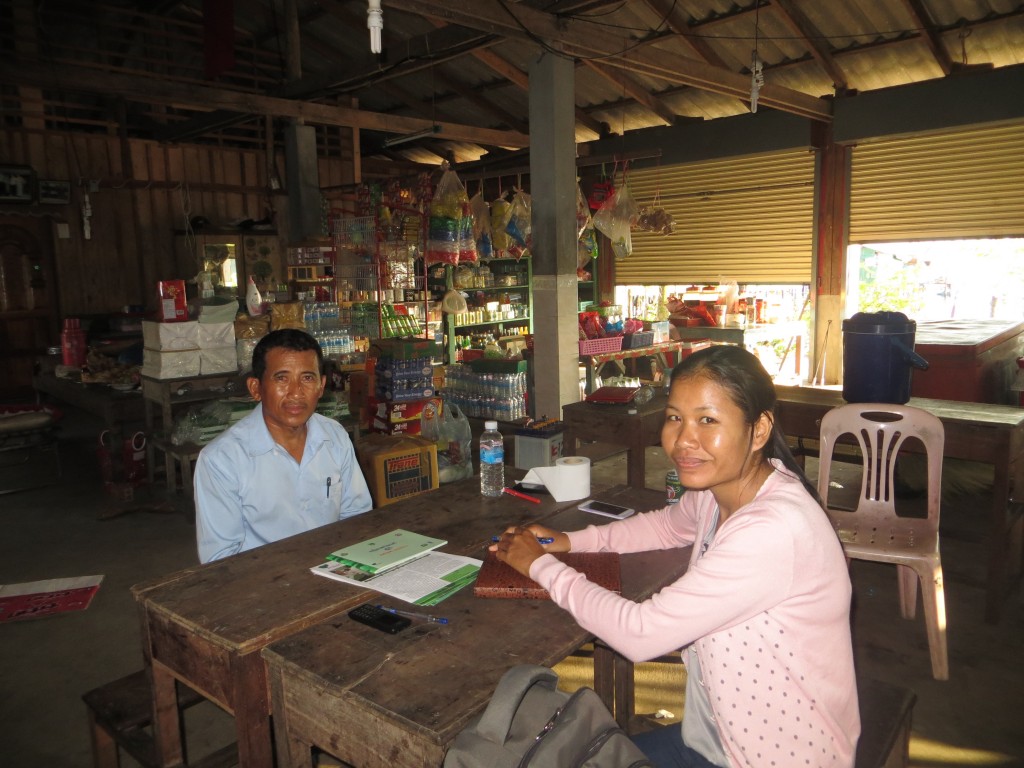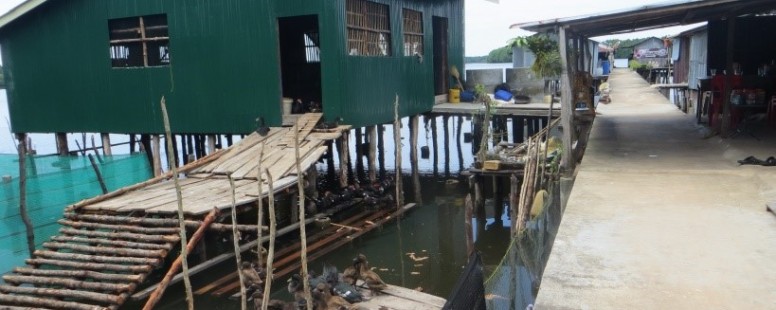Resource Governance in Toul Korki: A Case Study of Community Protected Areas
Blog posted on behalf of Mom Sary – Master’s Student, Chiang Mai University
I conducted three months of field research from mid-October, 2015 to mid-January, 2016 in Toul Korki commune, Koh Kong province, Cambodia. There are four villages in Toul Korki commune including Toul Korki Krom, Toul Korki Leu, Koh Chak, and Tachat village. Key local people in these four villages formed a Community Protected Area (CPA) with the assistance of the Participatory Management of Coastal Resource Project of Ministry of Environment (PMCR-MoE). The CPA was recognized by the MoE in 2013. The Ministry of Environment provided 1813 ha. of land forest cover (520 ha. of mangrove forests) to the CPA for collective access, use, and management. One priority of the CPA is mangrove governance, which is a part of wider coastal resource and environmental governance and can contribute to lower carbon emissions through keeping mangrove forests intact along the coastal areas in Cambodia.
Reduced emissions from deforestation and forest degradation (REDD+) and Payment for Ecosystem Service (PES) are global initiatives that seek to mitigate climate change by decreasing losses of the world’s remaining natural forests or other reductions in forest carbon stocks. These schemes are Non-State Market Driven (NSMD) systems. The weakness of local state actors and Community Protected Area (CPA) performance in mangrove conservation and protection can be supplemented by NSMD to ensure ecosystem services, carbon sequestration and livelihoods of local people.
Local perceptions of Non-State Market Driven approaches to Mangrove Governance
My research looked at the perceptions of key actors in the CPA in Toul Korki to PES and REDD+. Perceptions on PES and REDD+ from local state actors, CPA and projects documents in TKK are generally positive. REDD+ has been promoted in Toul Korki in an informal way by a CPA network member in neighbouring Peam Krasaop Wildlife Sanctuary. The UN-REDD+ Cambodia have provided several boxes of REDD+ booklets in both English and Khmer along with pictures to illustrate meanings including the purpose of REDD+, REDD+ processes, transaction costs, benefits sharing, and implementation. Despite these efforts, the CPA chief in Toul Korki has a limited understand of REDD+.

Mom Sary conducting interviews
Local state authorities on the other hand, know the CPA helps to support livelihood options in each village. They are also aware that some poor households still cut mangroves for charcoal production because they do not have jobs. However, mangrove cutting is higher from neighboring communities and communes at night so strategies to support mangrove conservation at night time are seen to be important for the CPA. Mangrove cutting households are typically in-migrants, although they have been living in TKK for over five to ten years. These mangrove cutting households are included in the CPA but they rarely attend the meetings because they do not benefit from CPA work.
Some mangrove cutting households have said that they will stop cutting mangroves and involve themselves in CPA if the project helps to support them financially and provides appropriate options for them. A few households have no land so they wish to have land allocated from the government for rice farming and crop cultivation.However, some mangrove cutting households have indicated that they do not expect support from the CPA projects because they have experienced previous projects which offered very little money or where benefits went to a small group of elite people.
Both focus groups discussions and key informant interviews suggest that the CPA plans to establish an eco-tourism project. A neighboring CPA in Beong Kayak got external to establish eco-tourism through which they earn income selling tickets to tourists with benefits shared among CPA members. This has led to more involvement of villagers in mangrove conservation and protection. Based on this model, the CPA in TKK strongly expects help from projects or NGOS to establish eco-tourism in their area even though they know that the private tourism owner in Tachat has negotiated with the CPA.
The expectations of CPA members and local state authorities from the project are different with respect to the basic needs of local people as they relate directly to financial support, appropriate options for their livelihoods (eco-tourism development), and land allocation individually from the government. However, some local people said the support they received from previous projects did not really meet their basic needs and there is still a fear that projects will mostly benefit the local elite.

Farmer and CPA member, Toul Korki Krom village
This photo shows a resident of Toul Korki who is both a farmer and CPA member. He was also a former commune council member. He has sons working in Thailand who sent him money to raise fresh water fish (Trey Tilapia, Trey Marech, and Trey Pra). He bought the fingerlings and feed from Thailand. It is his first time to raise fresh water fish in front of his home near the mangrove area. He spent 3,000 USD to dig his fresh water pond and he raised 10,000 baby fish. When I was there, the fish had been raised for three months. He uses the fish pond dike to grow cucumber.
He raises fish for both selling and tourist fishing. He told me that some tourists visit his village and after looking at his fish they contributed some money. His daughter sells drinking water and other products near his fish pond because it is in front of his home. He was also preparing chicken cages to raise chickens. He would like to be a model for other villagers. He understands that some villagers are very dependent on the support from projects so he tries his best to show his commitment to these livelihood strategies.

